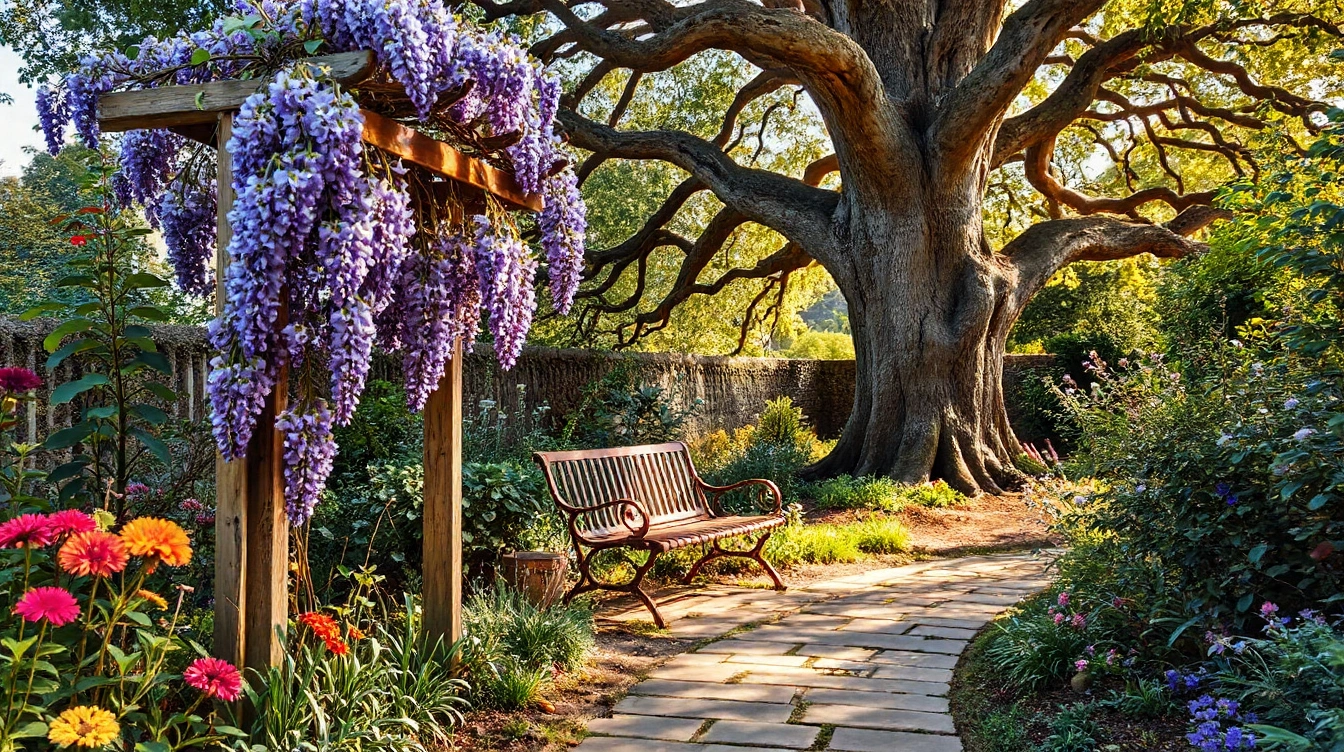Creative Vertical Gardening Solutions for Small UK Gardens
Vertical gardening is a game-changer for anyone working with limited outdoor space. For small garden ideas, wall-mounted planters offer an elegant solution by utilizing vertical surfaces rather than ground areas. These planters can hold herbs or flowers and are perfect for creating a lush green wall in a compact British garden.
Pallet gardens are another brilliant space-saving gardening technique. By repurposing wooden pallets, gardeners can create tiered structures that hold multiple plants, making the most out of limited soil space. These are easy to customize and suitable for various plant types.
Also read : How Do You Transform a Small UK Garden into a Wildlife Haven?
DIY trellises and obelisks provide vertical support for climbing plants like sweet peas or runner beans. Building these structures from locally sourced materials can add charm while increasing growing area. In the often damp UK climate, elevating plants can also improve airflow and reduce disease risk.
Installing hanging baskets and multi-tiered shelves adds layers to your garden’s vertical dimension. Hanging baskets are ideal for colorful blooms and trailing plants, whereas multi-tiered shelves can organize pots efficiently. Combining these methods maximizes space without sacrificing garden vibrancy—essential UK garden tips for maximizing greenery in small plots.
Additional reading : How Can You Transform Your Small Patio Into a Cozy Retreat?
Upcycling Everyday Items into Garden Features
Upcycling transforms everyday objects into charming garden elements while supporting sustainable gardening. This approach fits perfectly with budget garden ideas, allowing you to create unique outdoor spaces without overspending.
One popular upcycled garden project involves repurposing old furniture like broken chairs or drawers into planters. These found objects not only add character but also save you from buying new pots. Similarly, containers such as tins, jars, or even worn boots can serve as creative plant holders, infusing personality into your garden design.
Decorative garden art crafted from recycled materials offers another fun, eco-friendly option. For instance, bottle caps, scrap wood, or metal scraps can be transformed into colorful mosaics, wind chimes, or garden stakes. These projects combine aesthetics with personal expression.
Finally, household waste like plastic bottles or pallets can become highly functional garden pieces. They might be converted into vertical gardens, compost bins, or tool organizers. Such solutions exemplify how upcycled garden projects embrace resourcefulness, reducing landfill waste while enriching your outdoor environment.
Compact Layouts and Smart Zoning Techniques
Designing a small garden requires thoughtful garden zoning to maximize every inch. Dividing your space into distinct zones lets you create areas for seating, planting, and even storage. For example, a tiny corner can host a cozy bench, while another side holds lush raised beds. This division enhances function without feeling cramped.
Raised beds and container gardens are ideal for small garden design because they define planting areas vertically and keep the garden tidy. By elevating soil, raised beds improve drainage and allow better root growth, making them perfect for confined spaces. Containers further add flexibility—they can be moved around to adapt to sunlight changes or seasonal needs.
Planning accessible pathways within tight layouts is crucial. Narrow, clear paths guide movement without wasting space and prevent trampling delicate plantings. A winding path design can create the illusion of a larger garden, making it feel more inviting. Smart zoning paired with practical layout tips for tiny gardens ensures that your garden remains both beautiful and functional despite its limited size.
Growing UK-Friendly Plants and Edibles
When planning a garden with UK garden plants, selecting low-maintenance and climate-appropriate flowers is essential for success. Opting for hardy varieties adapted to the UK’s temperate climate reduces the need for constant care and increases your garden’s resilience through changing seasons.
For example, incorporating plants like lavender, hellebores, and fuchsias offers lasting appeal without extensive upkeep. In edible gardens, creating DIY herb spirals maximizes space efficiency and ensures easy access to fresh herbs like rosemary, thyme, and basil. These spirals also encourage better drainage and microclimates, enhancing growth.
Mini vegetable patches are another excellent choice for beginners. Focus on cool-season crops such as kale, radishes, and peas, which thrive in UK conditions. Implement seasonal planting strategies by rotating crops and staggering sowing dates to maintain garden interest year-round.
Remember, understanding local climate patterns allows gardeners to time plantings for optimal growth. With careful planning, your garden can offer both visual charm and practical harvests throughout the year, making it a rewarding and sustainable outdoor space.
Sourcing Materials and Plants Locally
Local sourcing plays a crucial role in garden material sourcing, offering sustainable and cost-effective solutions. In the UK, numerous hardware stores and reclamation yards provide affordable materials such as timber, soil enhancers, and decorative stones. These outlets often stock reclaimed wood or surplus items, making them ideal for budget-conscious gardeners aiming to create eco-friendly spaces.
When it comes to plants, native species found at UK nurseries are well-adapted to the climate, promoting healthier growth and requiring less maintenance. Visiting local plant nurseries and markets allows gardeners to find a diverse range of native varieties, from flowering perennials to shrubs, which support local biodiversity and enhance garden resilience.
Engaging with community gardening groups is another invaluable resource. These groups frequently organize swaps, share tips on garden material sourcing, and connect gardeners with trustworthy local suppliers. This not only fosters a sense of community but also opens opportunities to access rare plants and materials without high costs. By sourcing both plants and materials locally, gardeners contribute to a more sustainable and vibrant gardening culture.









